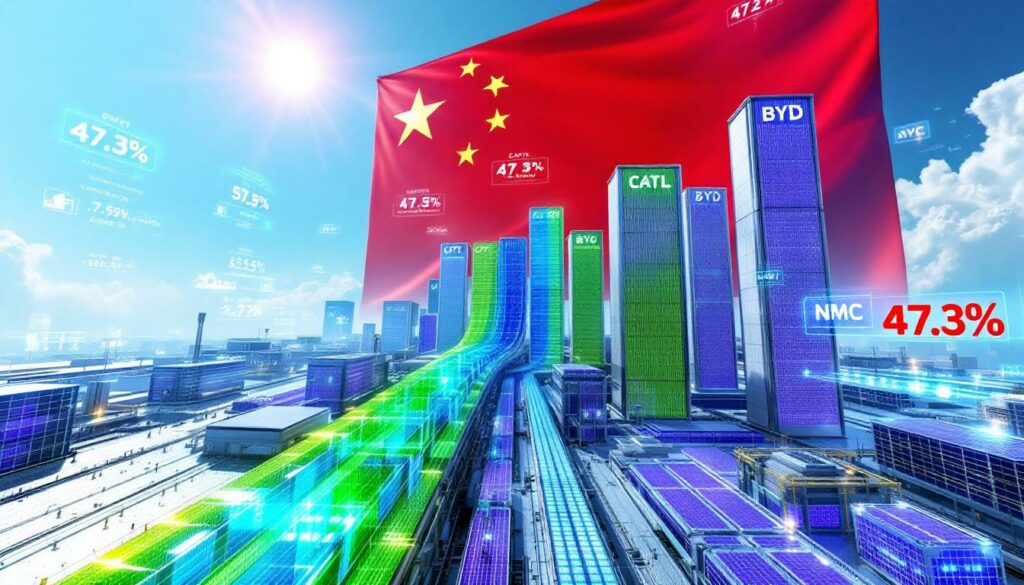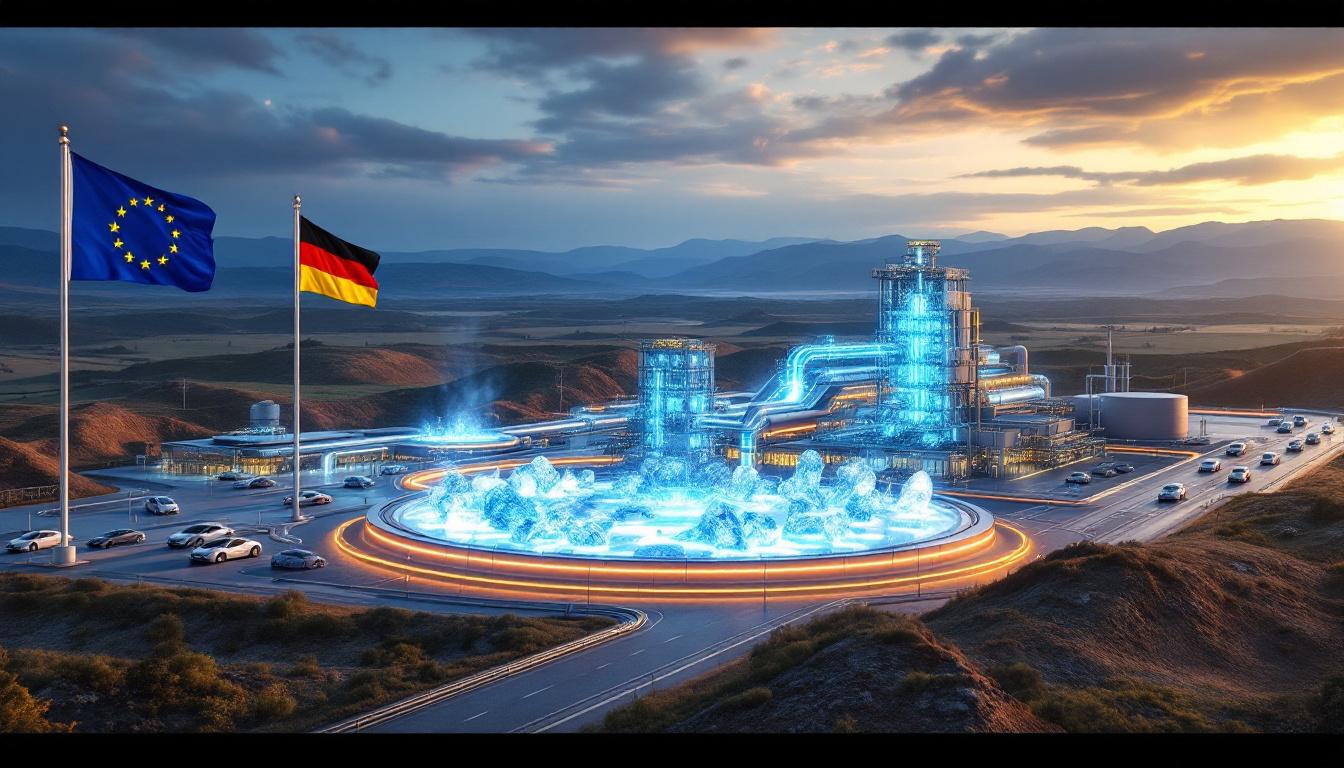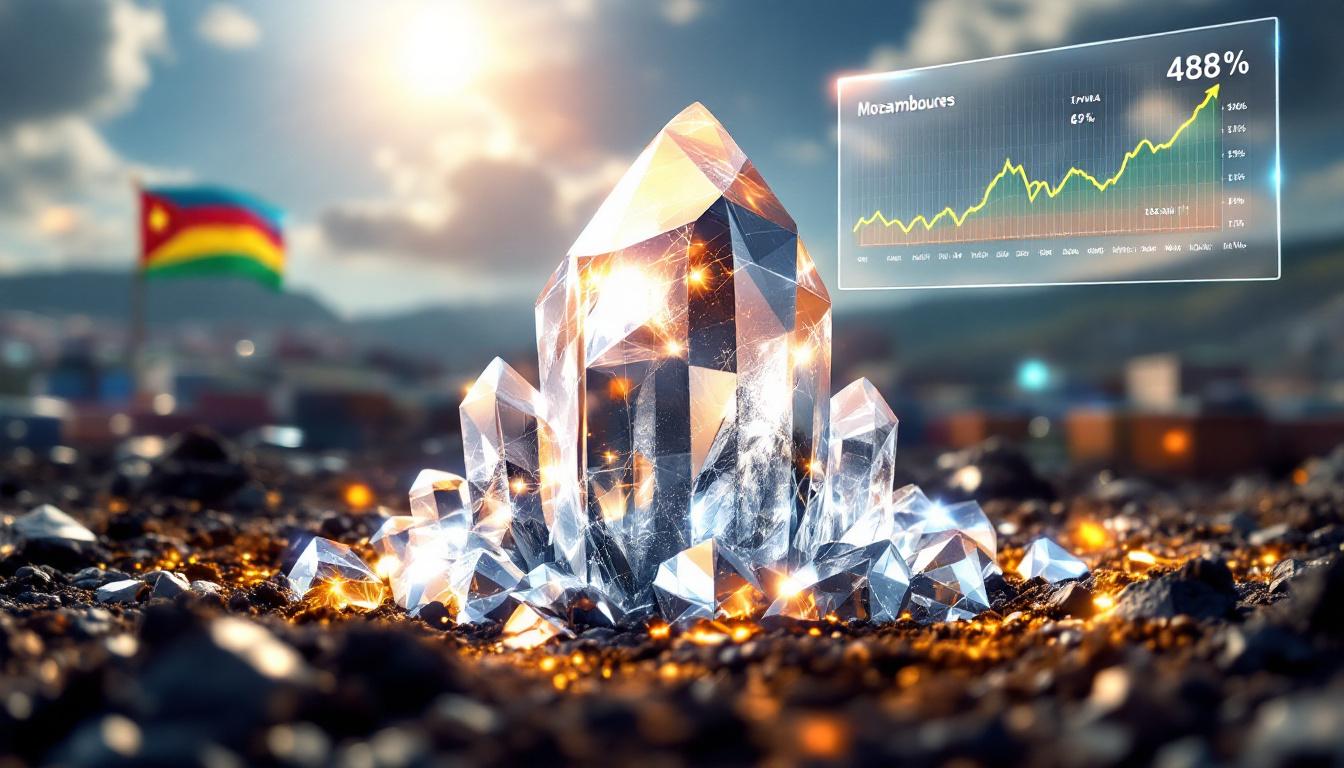How Has China's Battery Market Grown in Recent Years?
China's battery market has experienced unprecedented growth in recent years, establishing the country as the global powerhouse for energy storage technology. This remarkable expansion has fundamentally transformed the international landscape for battery manufacturing, with Chinese companies achieving dominance through a combination of strategic investments, technological innovation, and supportive government policies.
The country's battery sector has grown at a pace that far outstrips global competitors, with production capacity expanding exponentially year after year. This growth trajectory has positioned China at the forefront of the global energy transition, supplying crucial components for everything from electric vehicles to grid-scale storage systems.
Chinese manufacturers have leveraged their massive domestic market to achieve economies of scale that competitors struggle to match, while simultaneously advancing battery technology across multiple chemistries and applications. The result has been a virtuous cycle of increasing production, falling costs, and rising global market share.
According to industry data, China now accounts for approximately 70% of global battery production capacity, reflecting its overwhelming manufacturing advantage in this critical technology sector.
The Remarkable 47.3% Growth in China's Battery Production
China's traction battery production reached an astonishing 299.6 GWh in the first half of 2025, representing a dramatic 47.3% increase compared to the same period in 2024. This exceptional growth rate demonstrates China's accelerating dominance in the global battery manufacturing landscape and underscores the country's strategic focus on energy storage technologies.
This remarkable expansion has been primarily driven by surging domestic electric vehicle sales, which reached 8.1 million units between January and June 2025—a 32% year-over-year increase according to the China Association of Automobile Manufacturers (CAAM). The correlation between EV adoption and battery production highlights the synergistic relationship between these two sectors in China's industrial strategy.
The massive scale of production has enabled significant cost reductions across the battery supply chain. According to BloombergNEF data from H1 2025, the average battery pack price for LFP (Lithium Iron Phosphate) batteries has fallen to $98/kWh, representing an 18% reduction since 2022. This cost advantage further strengthens China's competitive position globally.
"LFP's cost advantage and safety profile align with China's industrial strategy, reducing dependency on scarce nickel and cobalt." — Dr. Li Hong, CNRS Energy Materials Lab (Nature Energy, June 2025)
Key Production Statistics
- Total H1 2025 production: 299.6 GWh
- Year-over-year growth: 47.3%
- Top 10 manufacturers' market share: 93.6% (down 2.5 percentage points from 2024)
This growth has been enabled by technological advancements like CATL's CTP 3.0 (cell-to-pack) technology, which has boosted energy density by 15% compared to 2022 models. Additionally, improvements in manufacturing processes, including dry-coating technologies, have increased production efficiency while reducing environmental impact.
China's battery recycling breakthrough infrastructure has also matured significantly, with companies like GEM Co. achieving 95% lithium recovery efficiency in their pilot plants, creating a more sustainable and resilient supply chain.
Who Are the Market Leaders in China's Battery Industry?
The Chinese battery market features a competitive landscape dominated by a few major players while showing signs of gradual diversification. The market structure resembles an oligopoly with two clear leaders commanding the majority of production capacity and market share.
CATL's Continued Market Dominance
- Production volume: 128.6 GWh (H1 2025)
- Market share: 43.05% (down 3.33 percentage points from 2024)
- Technology mix: 89.79 GWh LFP cells and 38.81 GWh NMC cells
CATL (Contemporary Amperex Technology Co. Limited) maintains its position as the undisputed market leader, though its share has declined slightly. The company's significant R&D budget—reportedly $2.1 billion in 2024 according to Wood Mackenzie analyst Mingming Liu—has secured its technological leadership, particularly in high-energy density NMC (Nickel Manganese Cobalt) chemistry, where it has achieved energy densities of 230 Wh/kg versus the industry average of 200 Wh/kg.
BYD's Strong Second Position
- Production volume: 70.37 GWh (H1 2025)
- Market share: 23.55% (down 1.55 percentage points from 2024)
- Technology focus: Almost exclusively LFP cells (70.34 GWh)
BYD (Build Your Dreams) has maintained its position as the second-largest battery manufacturer in China, with a strategic focus almost entirely on LFP technology. The company's vertical integration strategy—controlling everything from mining operations to vehicle manufacturing—has created unrivaled cost advantages. BYD's innovative Blade Battery design has eliminated traditional module components, reducing weight by approximately 10% while enhancing structural integrity.
The Duopoly's Market Control
- Combined CATL and BYD market share: 66.6%
- Combined production volume: 199 GWh
- Significance: These two companies alone produce more batteries than most countries combined
According to S&P Global data from July 2025, the production capacity of just these two Chinese manufacturers exceeds the total battery output of all other nations in the first half of 2025, demonstrating the remarkable scale advantage China has established in this critical industry.
The duopoly maintains dominant supply relationships with major automotive manufacturers, with CATL supplying Tesla's Shanghai factory and BMW, while BYD's Blade Battery technology is found in approximately 70% of Chinese electric vehicles.
How Is the Market Share Distributed Among Chinese Battery Manufacturers?
While CATL and BYD maintain their dominant positions, the market is showing signs of increasing diversification with smaller players gradually gaining ground. This evolving landscape reflects a maturing industry where specialized manufacturers are finding viable niches despite the scale advantages enjoyed by the market leaders.
The Emerging Second Tier
- CALB: 19.46 GWh (third place)
- Gotion Tech: 15.48 GWh (fourth place)
- EVE Energy: 12.21 GWh (fifth place)
These three manufacturers collectively account for 47.15 GWh or approximately 15.7% of the total market. Each has established significant partnerships with automotive OEMs seeking to diversify their supply chains beyond the dominant players. CALB, for instance, has developed high-speed stacking technology that cuts production time by 50%, allowing it to compete effectively despite its smaller scale.
The Rising Challengers
- Sunwoda: 9.07 GWh
- Svolt Energy: 8.4 GWh
- Rept Battero: 6.59 GWh
- Zenergy: 5.95 GWh
- Jidian: 4.23 GWh
These five manufacturers represent the third tier of China's battery ecosystem, collectively producing 34.47 GWh or approximately 11.5% of the total market. Each has developed specialized capabilities or market focuses that enable them to thrive despite the market concentration.
"Specialized players like Svolt (solid-state prototypes) are gaining share by targeting niche segments like luxury EVs." — Zhang Yi, CABIA Technology Director
For example, Rept Battero's entire 6.59 GWh production (100% LFP chemistry) exclusively supplies SAIC's entry-level electric vehicles, while Zenergy has concentrated its 5.72 GWh LFP production on drone and swappable-battery markets.
"This trend suggests that while the leading companies still hold significant market power, new entrants and specialised firms are gradually finding their footing, leading to a more diverse industrial ecosystem." — CarNewsChina, cited in Battery Industry (July 22, 2025)
The 2.5 percentage point decrease in the top 10 manufacturers' combined market share indicates a gradual shift toward a more diverse ecosystem. According to PitchBook data, 17 battery startups secured $2.8 billion in funding in H1 2025, suggesting continued fragmentation of the market in coming years.
What Battery Technologies Dominate the Chinese Market?
The Chinese battery market shows a clear preference for specific cell chemistries, with strategic technological choices driving production decisions. The data reveals a definitive trend toward LFP (Lithium Iron Phosphate) technology, though NMC (Nickel Manganese Cobalt) batteries maintain an important role in specific applications.
LFP vs. NMC Cell Production
- LFP dominance: 246.44 GWh (82.2% of total H1 output)
- NMC production: 49.91 GWh (16.7%), primarily from CATL (78% of NMC output)
- CATL's dual strategy: Leading in both LFP (89.79 GWh) and NMC (38.81 GWh) production
LFP batteries have emerged as the preferred chemistry for most Chinese manufacturers due to several critical advantages. Professor Chen Qingtai from the China EV100 Association notes: "LFP's thermal stability reduces fire risks, a critical factor in China's dense urban EV adoption."
Beyond safety considerations, LFP chemistry offers significant cost advantages due to the absence of expensive materials like cobalt and nickel. According to Carbon Trust data from 2025, LFP batteries also have a 35% lower carbon footprint compared to NMC alternatives, aligning with China's growing focus on sustainable manufacturing.
Technology Distribution Among Top Manufacturers
| Rank | Company | Total (GWh) | NMC (GWh) | LFP (GWh) |
|---|---|---|---|---|
| 1 | CATL | 128.6 | 38.81 | 89.79 |
| 2 | BYD | 70.37 | 0.02 | 70.34 |
| 3 | CALB | 19.46 | 5.85 | 13.61 |
| 4 | Gotion Tech | 15.48 | 0.29 | 15.2 |
| 5 | EVE Energy | 12.21 | 0.52 | 11.7 |
| 6 | Sunwoda | 9.07 | 1.06 | 8.01 |
| 7 | Svolt Energy | 8.4 | 3.13 | 5.27 |
| 8 | Rept Battero | 6.59 | – | 6.59 |
| 9 | Zenergy | 5.95 | 0.23 | 5.72 |
| 10 | Jidian | 4.23 | – | 4.23 |
This table clearly illustrates the market's overwhelming preference for LFP technology, with only CATL maintaining significant production of NMC batteries. The continued demand for NMC batteries primarily comes from applications requiring higher energy density, such as premium electric vehicles with extended range requirements.
BYD's strategic decision to focus almost exclusively on LFP technology has been vindicated by market performance, with its Blade Battery design achieving 450 km range in A-segment electric vehicles—a performance level previously thought to require NMC chemistry.
The market is also witnessing early adoption of emerging technologies, with CATL developing sodium-ion batteries achieving 160 Wh/kg energy density for micro-EVs, according to CABIA technical briefs. These alternatives may further reshape the technology landscape as they mature.
What Factors Are Driving China's Battery Market Expansion?
The remarkable growth in China's battery market can be attributed to several interconnected factors that have created a uniquely favorable environment for industry development. These drivers span government policy, technological advancement, and market dynamics, creating a self-reinforcing cycle of expansion.
Government Policy Support
- Strategic industrial policies like "Made in China 2025" mandate 25% EV sales by 2025 (up from 7.5% in 2020)
- Subsidies covering up to 40% of battery plant capital expenditures
- National energy transition strategies driving demand for grid-scale storage
Dr. Xu Le from Tsinghua University's Energy Lab explains: "Subsidies covering 40% of battery plant CAPEX enabled China's gigafactory boom." This policy support has facilitated the development of manufacturing facilities at unprecedented scale, such as CATL's 130 GWh/year factory in Ningde—the world's largest battery production facility.
Technological Innovation
- Continuous improvements in energy density and battery performance
- Cost reduction through manufacturing scale and efficiency
- Development of China-specific battery technologies like BYD's Blade Battery
Chinese manufacturers have invested heavily in process improvements that reduce costs while enhancing performance. GEM Co.'s closed-loop recycling technology, which now supplies 40% of CATL's lithium requirements, exemplifies the innovation occurring across the entire battery value chain.
Domestic Market Demand
- Rapid growth in China's electric vehicle market (8.1 million units in H1 2025)
- Expanding energy storage requirements for renewable integration (48.2 GWh deployed in 2025, +112% YoY according to CNESA)
- Industrial electrification and decarbonisation initiatives creating new applications
The synergy between China's domestic market size and its manufacturing capacity creates powerful advantages. State Grid's recent 20 GWh grid storage tender (July 2025), which exclusively specified domestic LFP batteries, demonstrates how internal demand supports industry growth.
China also benefits from a skilled technical workforce, with an industrial technician density of 12.4 per 1,000 workers compared to just 4.2 in the European Union, according to International Labour Organization data. This human capital advantage enables more rapid deployment of advanced manufacturing techniques.
How Is Market Diversification Changing the Competitive Landscape?
The gradual shift toward a more diverse battery manufacturing ecosystem in China presents both challenges and opportunities for industry participants. This evolution reflects the sector's maturation and the emergence of specialized producers alongside the established giants.
Emerging Signs of Diversification
- Decreasing market concentration among top 10 manufacturers (down 2.5 percentage points)
- 17 battery startups secured $2.8 billion in funding in H1 2025 (PitchBook)
- 38% of automakers added two or more battery suppliers since 2024 (J.D. Power China)
This diversification trend suggests that while scale economies remain important, other factors including technological specialization, customer relationships, and agility are becoming increasingly valuable in the market.
Strategic Partnerships and Integration
- Automotive manufacturers developing in-house battery capabilities
- International collaborations expanding market reach
- Vertical integration across the supply chain
Sunwoda's joint development model exemplifies a new approach to market participation, with the company co-designing battery systems with NIO to create optimized solutions. This collaborative approach allows smaller manufacturers to compete effectively in specific market segments.
Innovation from Smaller Players
- Specialized battery solutions for specific applications
- Alternative cell chemistries and designs
- Manufacturing process innovations
According to Svolt Energy CTO Han Wenxiu: "Specialized players leverage modular production to achieve profitability at 5 GWh/year scale." This represents a significant shift from earlier industry assumptions that much larger production volumes were necessary for commercial viability.
The diversification trend isn't without challenges. According to CABIA quality reports, Tier 3 manufacturers experience defect rates of approximately 0.8% compared to 0.2% for Tier 1 producers, indicating that quality control remains a competitive advantage for established players.
Market consolidation continues alongside diversification, with companies like Gotion acquiring three material suppliers in 2024 to strengthen their supply chain position and capture margin across the value chain.
What Are the Implications for the Global Battery Supply Chain?
China's battery market growth has significant implications for the global energy storage ecosystem and electric vehicle industry, creating both opportunities and challenges for international stakeholders.
Global Market Influence
- China accounts for 58% of global EV batteries shipped in 2025 (IEA)
- Technology standards increasingly defined by Chinese manufacturers
- Chinese production setting worldwide battery price trends
This dominant position gives Chinese manufacturers substantial influence over global technology standards and pricing. The country's scale advantages have accelerated cost reductions industry-wide, benefiting electric vehicle adoption globally while creating competitive challenges for non-Chinese producers.
International Expansion
- Chinese manufacturers establishing production facilities globally
- Technology transfer to international markets
- Competition with emerging battery hubs in Europe and North America
CATL's European expansion, including its German gigafactory (which recently received Exyte's award for facility innovation), demonstrates the global ambitions of China's battery leaders. These international facilities
Want to Capitalise on the Next Major Mineral Discovery?
Stay ahead of the market with Discovery Alert's proprietary Discovery IQ model, which instantly notifies investors of significant ASX mineral discoveries, transforming complex mineral data into actionable investment insights. Visit the Discovery Alert discoveries page to understand how major mineral discoveries have historically generated substantial returns for early investors.




